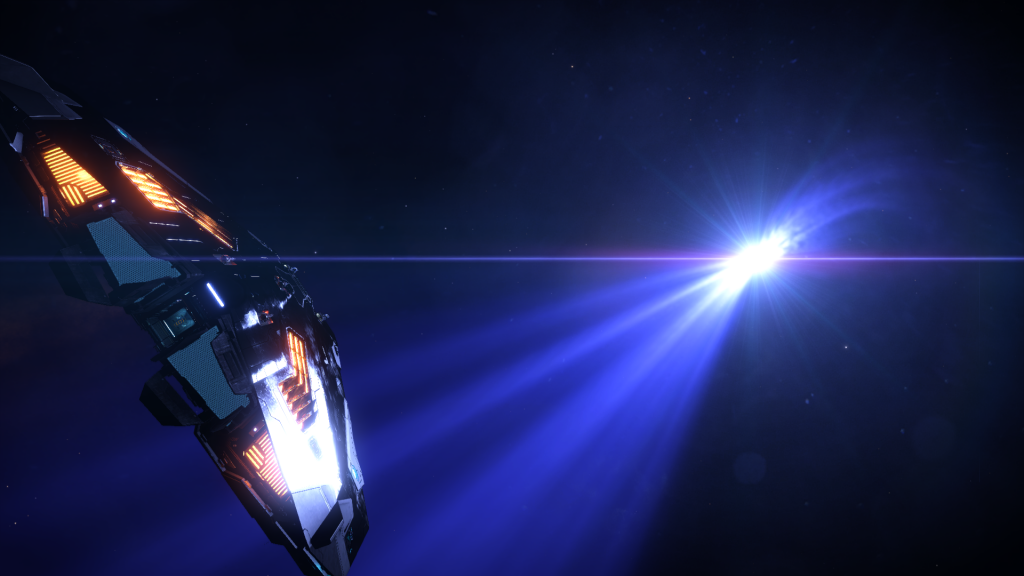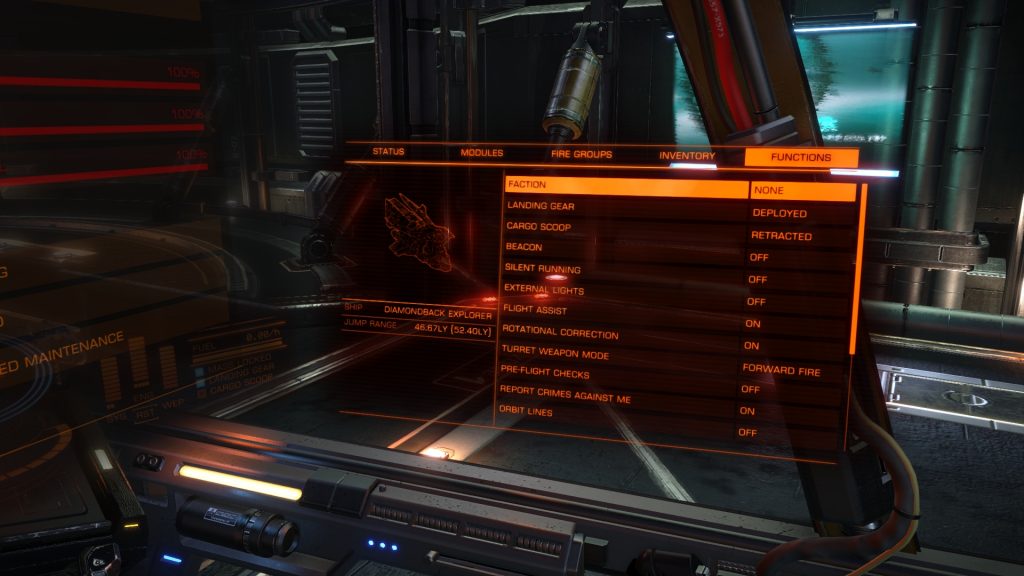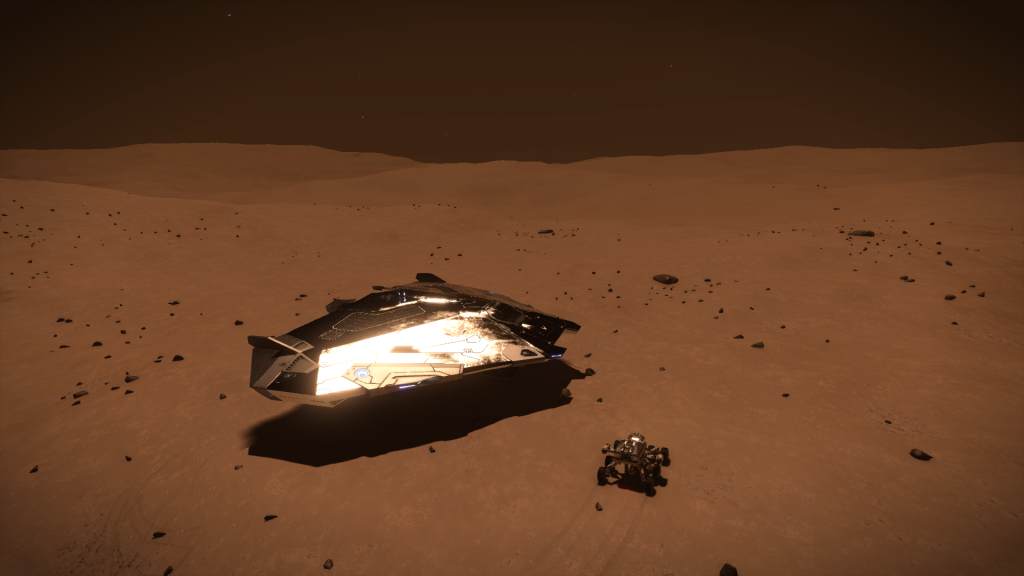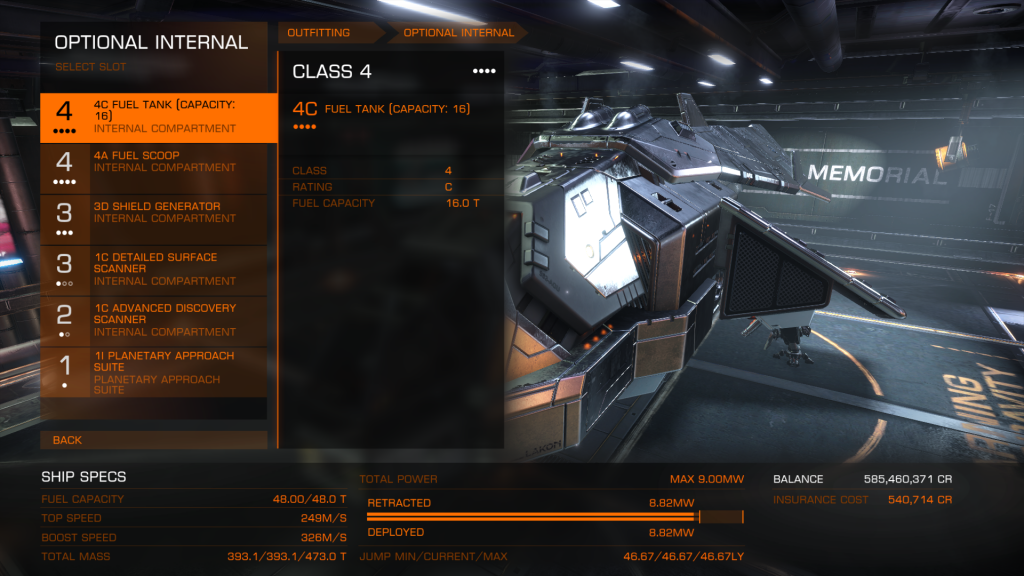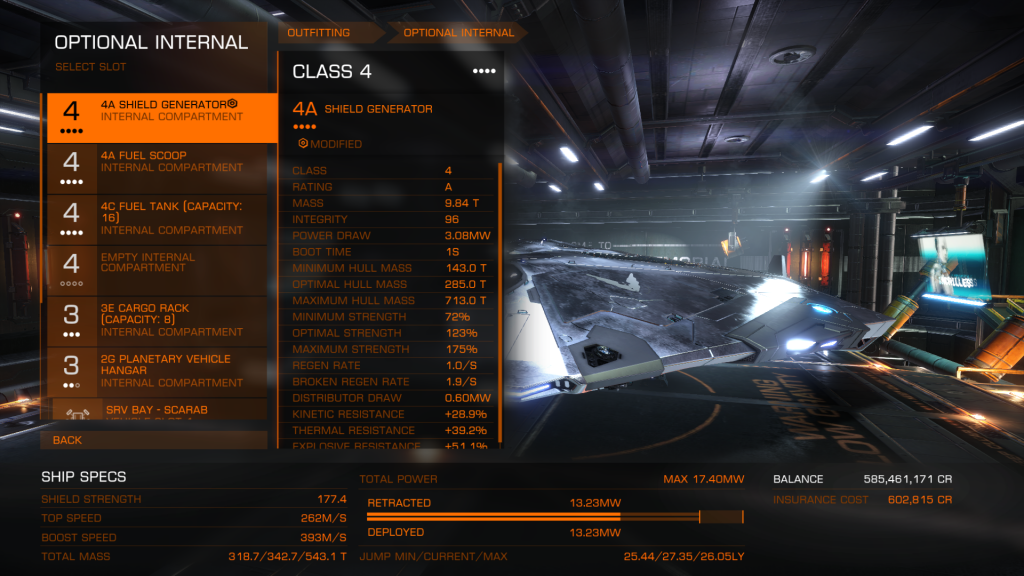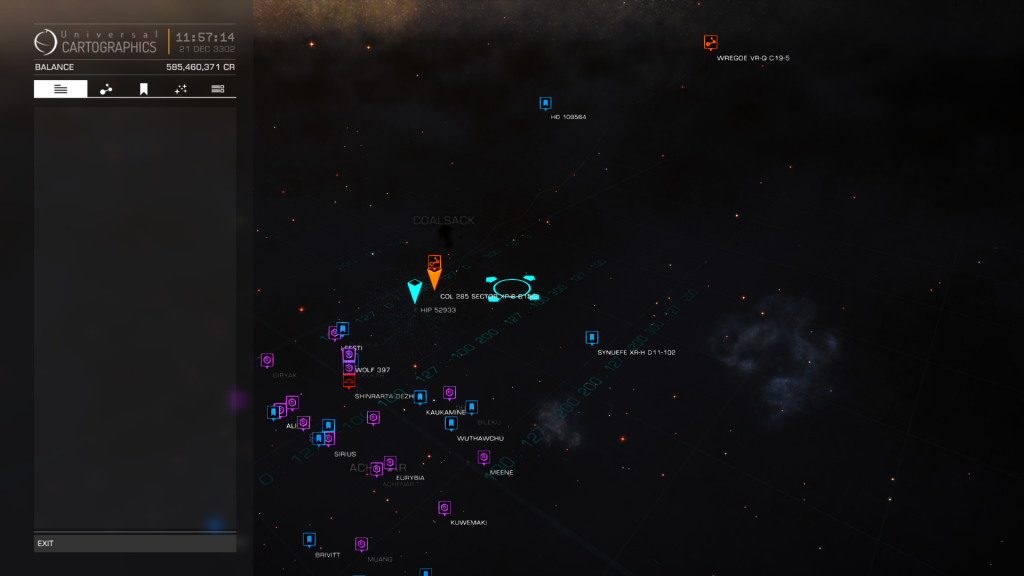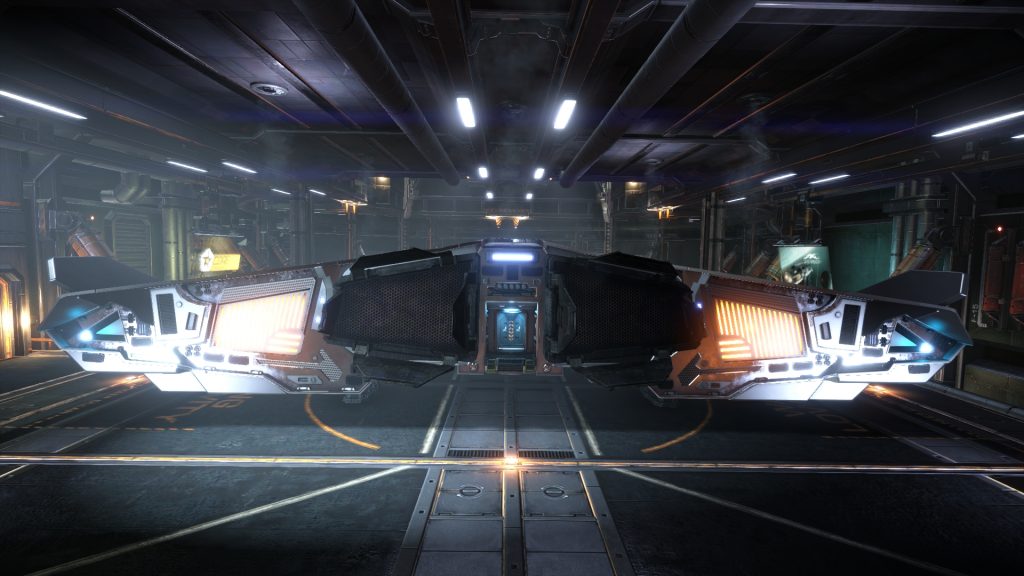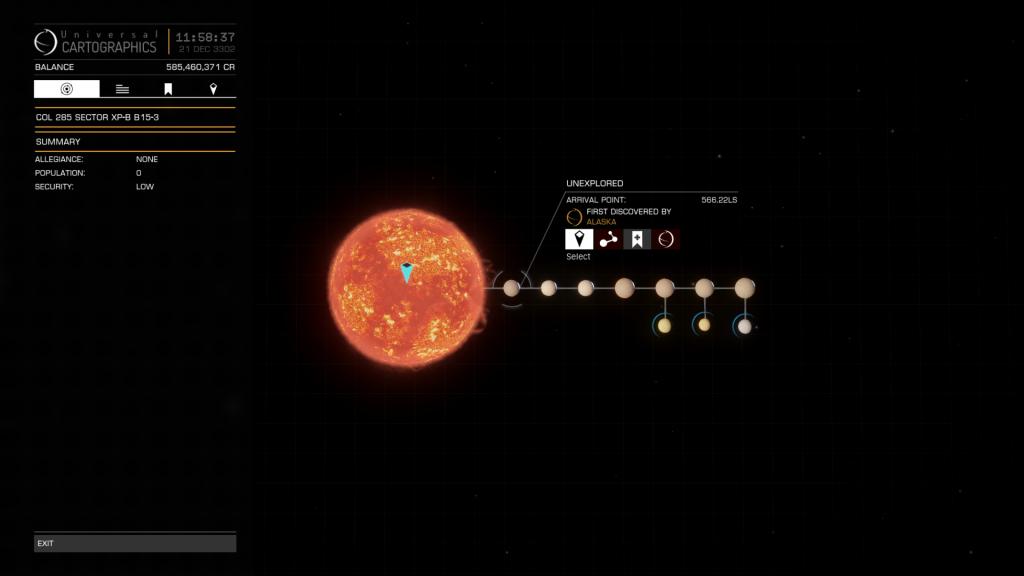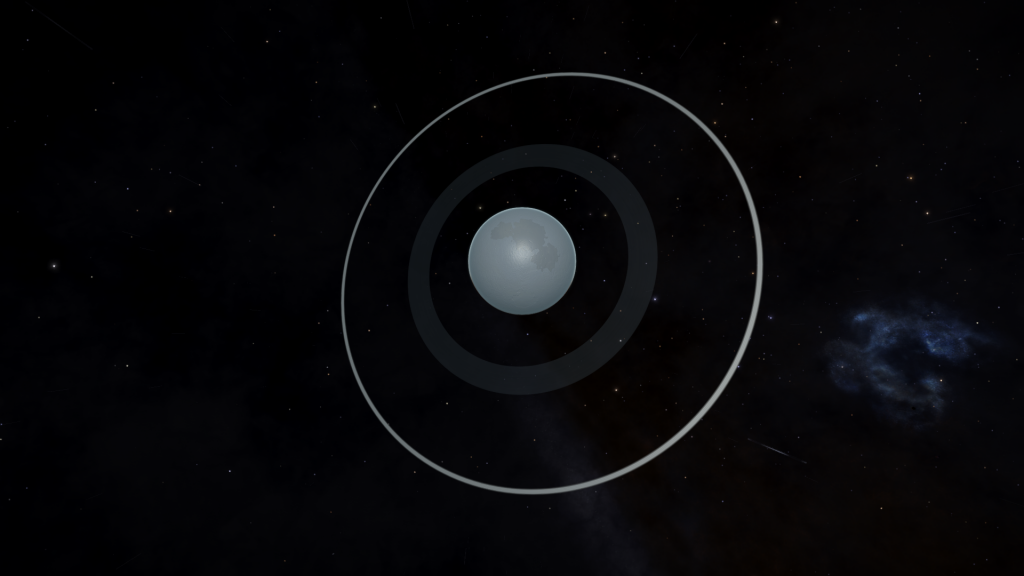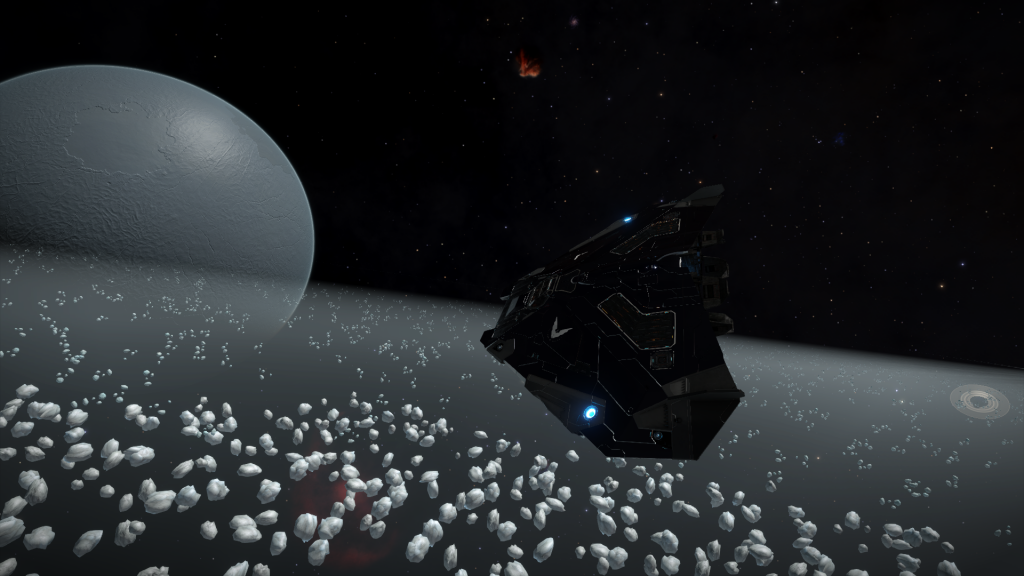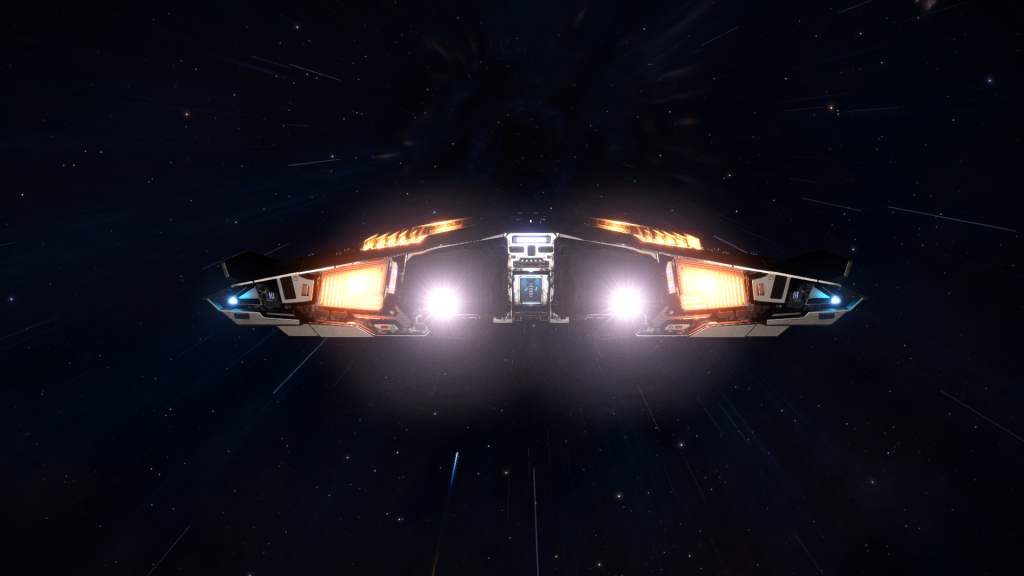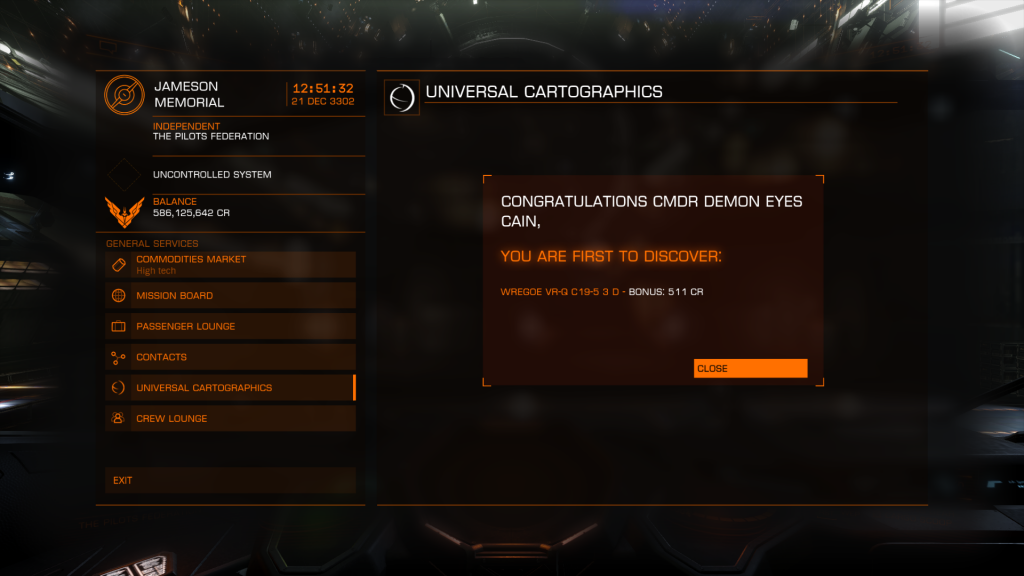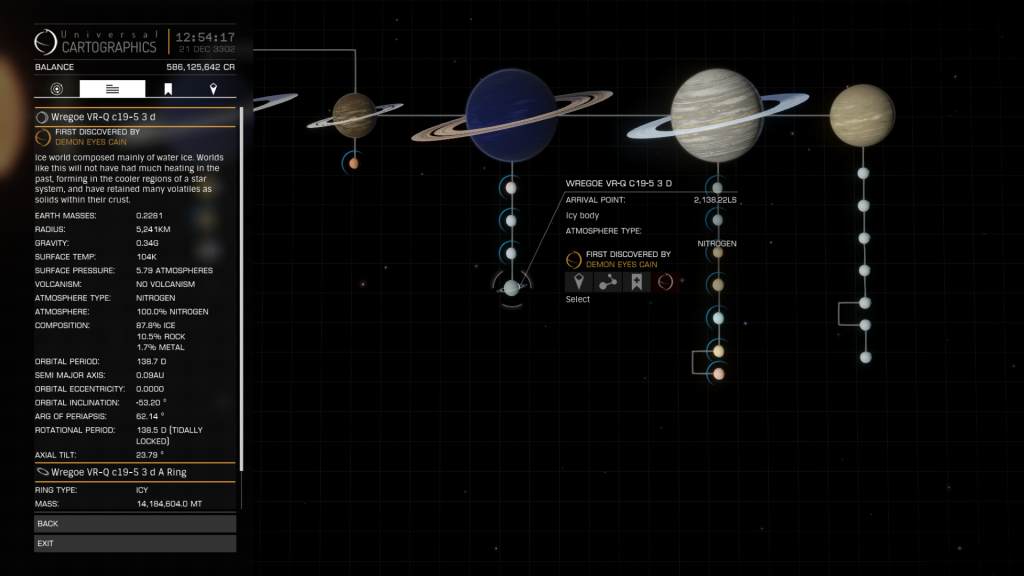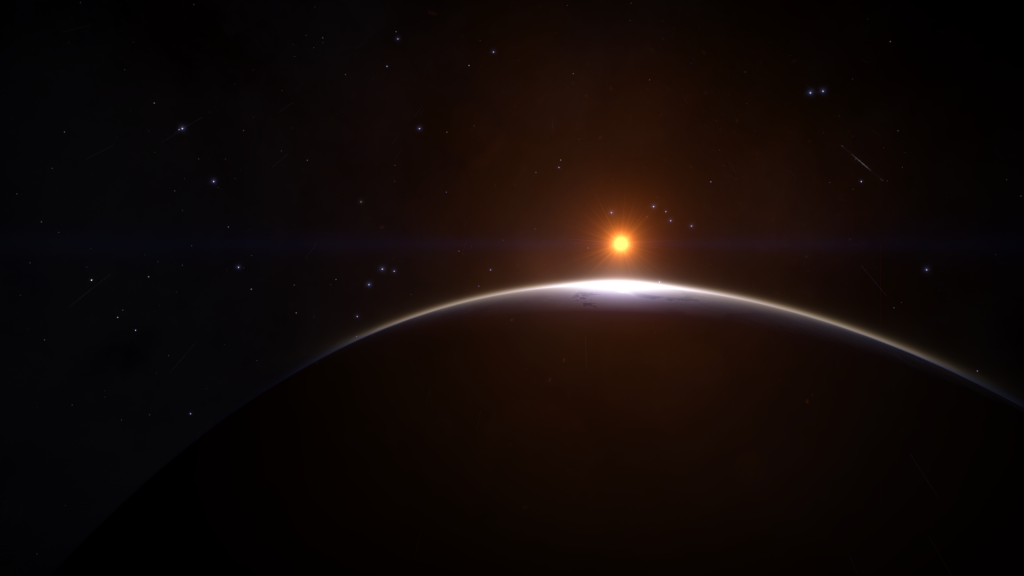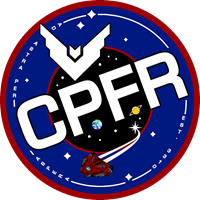A look into the world of exploration by CMDR Demon Eyes Cain.
Of the three main career paths in Elite: Dangerous, exploration is most likely to be defined as a labour of love. It isn’t the most financially awarding or the most exciting career, but it touches a special place inside explorers that get the bug. People choose to explore for multiple reasons: it can be very low risk, it’s a fairly cheap career to get into, you get to see things no one else has seen, you get wonderful photo opportunities, and your name can forever be etched in the galaxy as the commander that made the discovery. Many of us are genetically coded to want to explore. Whatever your reasoning , let us get started.
There are a few basic components you will need to effectively explore. For starters, you will want to choose a ship. Any ship can fill the role of explorer, some ships just do a little better than others. A safe bet is any ship that can obtain a 20 light year jump range or higher. This helps prevent a casual stroll from ending with you stuck with no scoopable stars in range. A personal favourite of mine is the Diamondback Explorer. It boasts a natural capped jump range around 30LY with an engineered FSD getting you closer to 55LY.
But exploration isn’t all about jump range. A lower jump range means you will be seeing more stars and planets overall at the cost of a larger time investment. The Diamondback has one other major shortcoming for most novice explorers: a low amount of optional module slots. This brings me to my next point of outfitting. To squeeze the most out of any expedition, you will want a discovery scanner for locating objects and a surface scanner for increasing profit, increasing the info you have on the objects, and pinning your name to it. Any discovery scanner can be used, but I suggest all new explorers save up the credits to go for an advanced discovery scanner as it will ping all objects in a system regardless of distance. Other scanners will require you to fly around honking until you are in range of the object. With a discovery scanner and surface scanner installed, the only other necessary module is a fuel scoop. If you leave without a scoop, you will get stuck and die. If you are lucky, you can get a Fuel Rat to come save you by asking on Reddit, directly on their website fuelrats.com or even on the forums. I suggest fitting the biggest and highest grade scoop your ship can hold to cut down on travel time.
Now for comfort and convenience, there are a few more modules you should consider. This is where module amount/space becomes important. If you have horizons and are brave enough to do surface exploration, you should bring an SRV. A size two vehicle bay will carry one SRV, which is repairable with salvageable materials, but not replaceable. If you’re worried about losing it, you may want to consider a size four vehicle bay that can carry two SRVs. A small cargo rack is not necessary, but can come in handy if you find anything out there you want to bring back. A small fuel tank can cut down on the time you spend scooping and makes sure you won’t have to stop as often. If you think you will get damaged, you may consider bringing an Auto Field maintenance unit with you. They weigh nothing and can help limp you back home in an emergency.
The debatable most important of the optional explorer modules is the shield. Any number of incidents can happen out there to ruin your day, so a small shield can help absorb some of that bad day and keep you on the road. Ensuring the rest of your modules (other than FSD) are D ranked will give you a higher jump range due to D rated modules usually being the lowest weight. If you’ve been keeping track, that’s quite a few optional modules to worry about. As you can see below, this becomes a problem on the Diamondback. I opt for a fuel tank over an SRV or cargo rack in this build. It gets 500LY in 11 jumps without having to refuel.
For the purposes of this guide, we will be using something with a few more module slots at the expense of jump range: the Cobra Mk IV. Where I’m extremely limited in options on the Diamondback, I can have a shield generator, fuel scoop, cargo rack, vehicle bay, both scanners, an extra fuel tank, and room to spare.
We have a ship. We have it as outfitted as it can be for exploration. All that’s left is to decide where to explore. Depending on what you want, you have several options. Most explorers make their first big expeditions to Sagittarius A at the center of the galaxy, some will plot a course for Jaques, go see VY Canis Majoris (one of the largest known stars), but most make their own path. You can plot routes in your galaxy map up to 1000 light years, and you can choose to take the fastest route or an economical route. Choosing the economical route will have you spending less time fuel scooping and ensure you see more stars due to every jump being to the closest star in your path. The main drawback to economical route is time investment. 500 light years at 45 light years a jump takes around 20 minutes. At 3 light years a jump? Make that 300 minutes.
I’m going to pick a random point about 500LY outside of the human occupied bubble to travel to so we can discover something new. You usually don’t make new discoveries until you’re at least 500LY outside of the bubble.
I took this photo after a couple of jumps out of Shinrarta Dezhra, but you get the general idea. With our course plotted, lets head out.
There are just a few tricks to exploration I should cover. You should hotkey 0% throttle and 75% throttle. During the 5-1 countdown by the computer while jumping to a new system, press 0% throttle button. You will come out on the other side of the jump completely stationary. This means no running into stars, most helpful at white dwarfs, neutron stars, and black holes. 75% throttle needs a little more explaining.
When you are approaching a distant object, planet or star, you normally have to carefully time and tweak your throttle to avoid over shooting. With 75% throttle hotkeyed, overshooting is a thing of the past. Simply travel full throttle towards the object of interest. When the time in minutes and seconds reaches 0:07 (under the distance from the object in the center of your HUD), mash the 75% throttle and enjoy the coast towards it without overshooting. Just 0% throttle when you’ve gotten close enough to scan or whatever you want. Landing on planets requires a little more finesse, you will have to gamble a little below 50% throttle before you even make it to orbital cruise. Another tip is to know your scoopable stars and be prepared to keep an eye out for then. Always Be Fueling Or Gonna Kill Myself (OBFOGKM), KGB FOAM, or FOG KABaM are great pneumonic to remember the main sequence stars you can scoop.
The general procedure for exploration is thus: jump, scan, open system map to check for anything of interest or value, repeat. Occasionally you will have to stop and fuel scoop. The majority of systems, especially close to the bubble, will look like this:
There is overall little value in this system. Everybody has already been discovered and there is nothing out of the ordinary. You will get your biggest numbers from Earth likes, water worlds, ammonia worlds, terraformable planets (can be any planet with an atmosphere), black holes, neutron stars, and white dwarfs. These are certainly the most rare of objects out in the black, but they are by leaps and bounds the most valuable. An undiscovered earth like can bag you close to 100,000 credits. High metal content worlds, metal rich, and gas giants also hold a nice value and are much more common than the aforementioned. There are other guides out there to show what each body looks like and their average value, but it doesn’t take long to get a “feel” for identifying what type of body you’re looking at on the system map.
Before you know it, you will arrive at the end of your current leg of the journey, ready to plot a new course. This is the system I ended up in, which happened to have several unexplored moons. I spotted this little ringed beauty and moved in to claim it.
It’s not every day you get to see such and open arrangement of rings. I scanned and dropped down to get a closer look.
To me, these are the two things exploration is about: the view and putting your name on it. Since I’ve accomplished the view I’m heading back to turn in my info and claim my moon.
The trip back takes at least as long as the trip out. This will be one of those times you wish you had a higher jump range!
Many explorers don’t just come back. They will stay gone for months at a time making huge trips around the galaxy travelling 10s of thousands of light years and more. Some of the best stuff to find is out of reach unless you are willing to put in the time to find it. I’ve come across ringed main sequence stars, neutrons and white dwarfs spinning dozens of times a second, solid planets the size of gas giants, planets practically inside their star, and stars so big you could fit Earth’s orbit around the sun inside of them. There are countless untold treasures generated by the stellar forge.
And just like that, I’m back at Shinrarta Dezhra ready to turn my info in.
If we go to the system map of that star system, we will now see my name on this planet.
Easier than you might think, if time consuming. Exploration isn’t for everyone. It’s not as exciting as combat or as profitable as trade. I made close to 80 million credits on my first major expedition that took me two and a half months. As a dedicated fighter, I got to where I could make that amount in about an hour. When you explore, you are alone. Some people hate it while others love it. No pirates, no aggressive CMDRs, no worries. It also means no outposts. You can lose all of your progress in a flash just by being careless. I’m not saying you shouldn’t be watching Netflix to help pass the time, but you need to use enough caution to survive and return your data. If you are worried about being destroyed on your way back by pirates, dial up Iridium Wing to ask for an armed escort. Like the Fuel Rats, they are a player group that generally helps the community.
If you decide exploration is for you, welcome to the club. It can be a nice change of pace from blowing stuff up or smuggling. Watch your fuel gauge, and as always fly dangerous!

